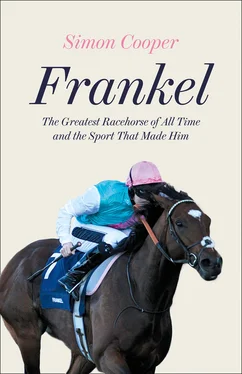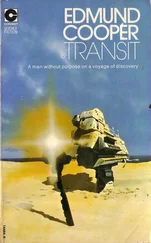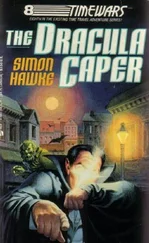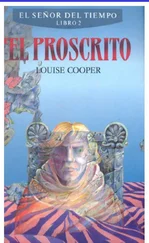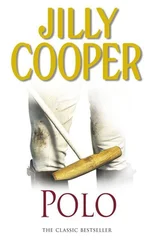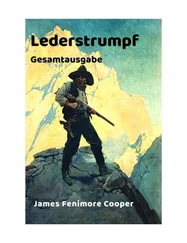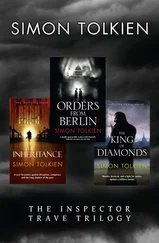It is still dark as the horse box rattles down the estate road to the Lakeview Yard. Kind had been allocated the first slot of the day, 7 am. Her reaction to Padraig had pronounced her ready the previous day. The vet was satisfied. That combination of old-fashioned breeding lore and modern science told the Coolmore team that her time was upon them.
Kind and her foal are loaded together into the box. There is no question of them being separated even though this will take under an hour. Separation would cause too much distress for both; after all, in the wild, in a herd, the foal would be at his or her mother’s side during mating. Why should this be any different?
The journey is not long. Ten minutes at most. Back up the estate road, across the public road and into the home grounds of the Coolmore stallions, which is altogether more grandiose than that of the mares. The gate man, from inside his temple-style, Portland stone gate house pushes a button to allow the huge, black wrought-iron gates to swing open. Along the drive of mature trees and manicured grass, the statues of the Coolmore greats pay silent heed to our early-morning arrivals. Ahead is the Magnier home, largely obscured by a high hedge above which peeks a fancy Swiss Family Robinson-style treehouse that reminds us that this is still, for all the bloodstock high finance, a family business.
Around the back, among the complex of stables, barns and offices it is altogether more workmanlike. Kind and her foal are unloaded and led into the pre-covering shed. The horse box remains, ramp down. This should not take long. The shed is cream-walled with a corrugated-iron roof and a large, blue-black sliding door that opens into a double-height shed lit by halogen lights high up in the rafters that counter the morning gloom. The floor has a deep covering of fine shredded rubber that muffles all sound. To the side are the three teaser stalls; behind the mesh door of one, the nose of a shaggy head moves from side to side, tracking every movement of the incoming occupants. At the opposite end is a rubber-floored, brightly lit veterinary bay that has the air of a surgery. Into here is led Kind; her foal, still in sight of mother, is gently held outside by two stable hands.
None of this would be unusual or unsettling to our pair; being handled, put in and out of horse boxes, moved to unfamiliar places and meeting unfamiliar people is part of the daily fabric of their lives. As the team wash her vulval area and bandage her tail to avoid any stray hairs interfering at the moment of covering, Kind thinks little of it. If nothing else, she has gone through precisely all this a year before. The hand-held scanner is passed over her neck, bringing up her ID number on the display from the microchip that was inserted soon after birth. A check against her passport confirms she is indeed who she is purported to be. It is not always that easy: American horses are identified by a tattoo on the inside of the lip which is notoriously hard to read, and Australian horses are branded. Again, not always easy to read. That is not to say high-end technology has all the answers. The Coolmore way of reminding everyone which mare is destined for which stallion is the leather fob bearing the stallion’s name, which is attached to the mare’s head collar. Simple. Effective.
Back out among the fine shredded floor covering of the shed, there is one last test. A stall door swings open to reveal our moving nose which is attached to a Padraig lookalike. Different barns, different teasers, but let’s call him Nosey. In half a dozen of his very short strides he is upsides Kind who doesn’t move at his approach, and almost without breaking stride he rears up to mount her, not from the rear as you might suppose but from the side, draping his front legs across her back where a saddle might be. It is practised and smooth. Almost balletic. Kind’s compliant acceptance of this act is the final confirmation she is ready. From the moment the door opens to Kind shrugging him off and Nosey on his way back to his stall – both seem to accept this for what it is, a final unrequited affirmation – takes no more than twenty seconds. As the stall door closes shut and Nosey is shrouded from view, Kind and Bullet Train leave the barn. Outside, in the pretty arbour, they await the call to attend Galileo like brides before the door of the church.
Galileo doesn’t need a horse box for his thrice daily journey to the covering shed; there is a private back route that takes him from stable to shed in a minute or two. No distractions. Nothing left to chance. This is a stallion prepped and ready to go. He knows the walk. He knows the routine. He knows what lies at the end of this particular yellow brick road. This is, after all, his job.
It is hard to overstate how very simple Galileo’s life is. Wake up. Have some food. Take a bit of exercise. Relax between two or three bouts of servicing your ever-changing harem. Retire for the night. That has pretty well been the sum of it for fifteen years; yesterday the template for today and today the template for tomorrow. For the highest paid athlete on the planet it is all remarkably, well I want to say boring, but that is not the correct word. People sometimes worry that horses get bored, but that doesn’t seem the case to me. As long as you attend to their essential needs with kindness, food, warmth and care, the passing of the days seems not to matter to them. They are, in the best of ways, simple souls. Shall we agree his life, of which a human might have much to envy, is comfortingly routine?
Galileo starts his day with what all horses crave: food. He has five meals a day, plenty to look forward to though they are smaller than your average stallion portions. A few years ago, he had a colon operation so for his own well-being he has a special diet of five reduced-size meals rather that the more normal three. Horses this valuable have nutritionists too. On the stable floor are wood shavings, not the favoured bedding of Coolmore as they can be dusty which gets in the lungs. Most animals have straw but Galileo would eat it – a tender colon and roughage-rich straw has all the potential for disaster. But he won’t go hungry by choice; there is always a pile of home-grown hay in the corner to pick at.
Like any horse he gets his exercise. Noel, his groom, lunges him each day in his paddock, trotting him in a circle controlled by a lunging line that is about 10 yards in length. Round and round they go for twenty or thirty minutes like some kind of human/equine whirligig, burning off energy until the pair have had enough. A bit later on, weather permitting, there will be a two-mile power walk. In the end, it is a toss-up who is the fitter – Noel or Galileo.
Galileo, along with the other five leading Coolmore stallions, live apart from everyone else. Their stables, two blocks of triple stalls, stand at right angles to each other overlooking a courtyard with a little park beyond. Each individual stable is big; if you are familiar with horse stables think at least twice the usual size. If not, think one half of a tennis court. The walls are whitewashed, the barrel-shaped double-height roof lined with cedar wood, with a large, half-moon-shaped window in the end wall with about a quarter of the roof given over to two enormous skylights. In the ceiling are water sprinklers and smoke detectors, no doubt the requirement of some ultra-cautious insurance company who carries the risk of these super-valuable residents. An infrared heating lamp hangs down ready to take the chill off a cold night.
For the top half of the stable door is never closed. Horses like the comings and goings of stable life. They must see the same things a thousand times or more. Still they stand and watch, those brown eyes tracking every small movement. Familiar figures confirming all is well. Strangers the subject of particular interest. At night, they are mostly awake; horses only need about three hours’ sleep in every twenty-four and largely do it while standing up. But at night there is still plenty going on. Mice scurry about gathering stray corn seeds, often shadowed by the stable cats never shy of spotting an opportunity. Occasionally, a fox pads on through, sliding through the shadows, curious but furtive. Bats flit. Owls hoot. The darkness provides a soothing blanket. Every hour a human figure appears, the shielded beam of a torch checking the occupants of each stall. And they’ll tell you that on a clear night, Galileo stands for hours staring up, his skylights a window to the stars. Maybe like his namesake, the father of astronomy, he sees things in the galaxy that are beyond our knowing?
Читать дальше
